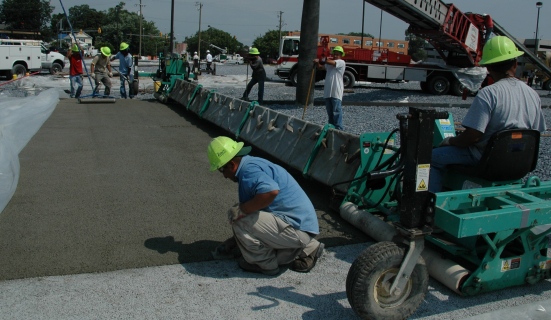Date: November 6, 2009
News - Pervious Concrete in Salisbury, MD Hospital
The 2-acre lot, designed by the Becker Morgan Group as part of a major renovation project, used Drain-Crete, the signature pervious mix produced by Chaney Enterprises and C&D Concrete. This is the largest Pervious Concrete project on the Eastern Shore.
“With the specification changes implemented by Maryland Department of the Environment, we are moving in the right direction to control storm runoff,” said Steve Tripp, Chaney Enterprises marketing manager. “We’ll be seeing a lot more Pervious Concrete in the years to come.”
Pervious concrete permits rain to pass through the pavement and directly into the soil which replenishes groundwater, eliminates runoff into local watersheds and satisfies EPA regulatory requirements. This product is extremely safe for the environment by providing more air and water to trees and plants, filtering out water-borne pollutants.
Unlike asphalt, pervious and conventional concrete contains no petroleum-based materials. Composed of sand, gravel or stone, cement and water, concrete is made using materials that are generally mined locally. Many concrete mix designs include the use of fly ash, a by-product of coal-fired power plants, blended in as cementious material. The Drain-Crete mix used in the PRMC parking lot used fly ash.
Concrete also reflects light better than asphalt pavements. Concrete parking lots require less lighting, and costs can be reduced as much as 30 percent, another eco-friendly benefit.

Crew from Z-Con finish off a section of pervious concrete and prepare to cover while the concrete cures. Pervious concrete permits rain to pass through the pavement and directly into the soil.